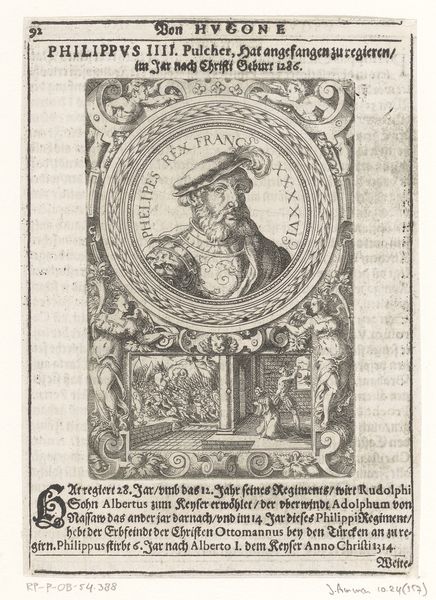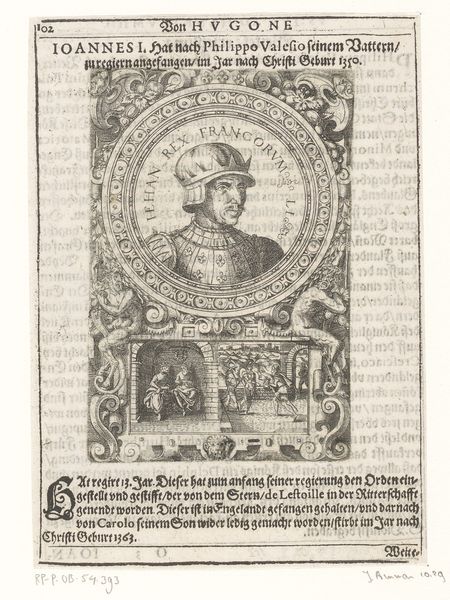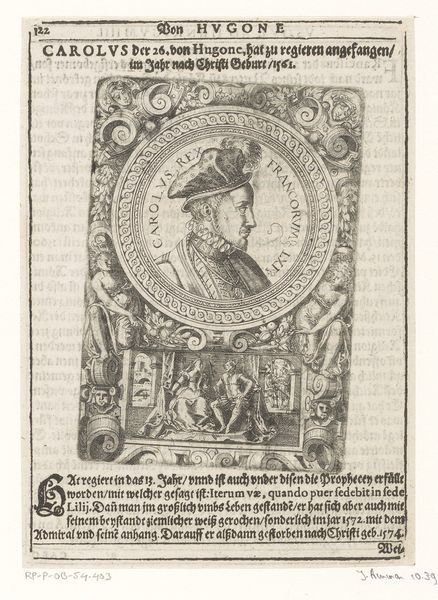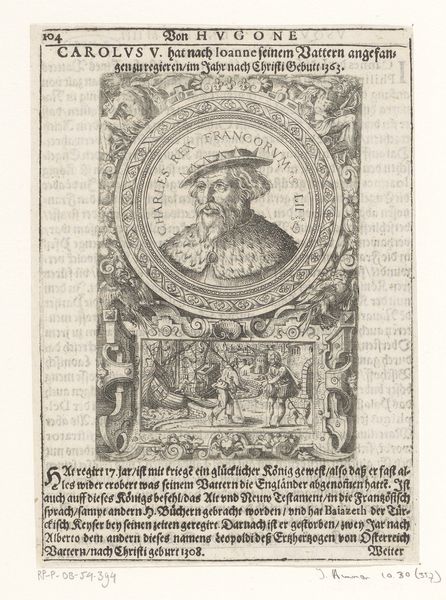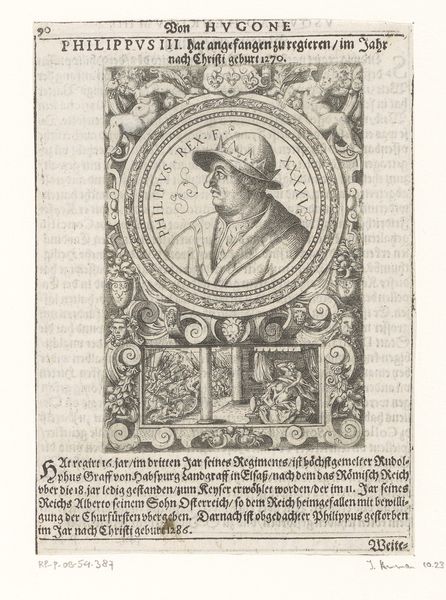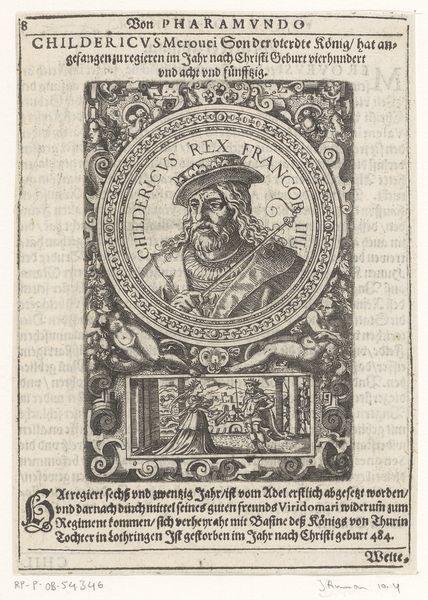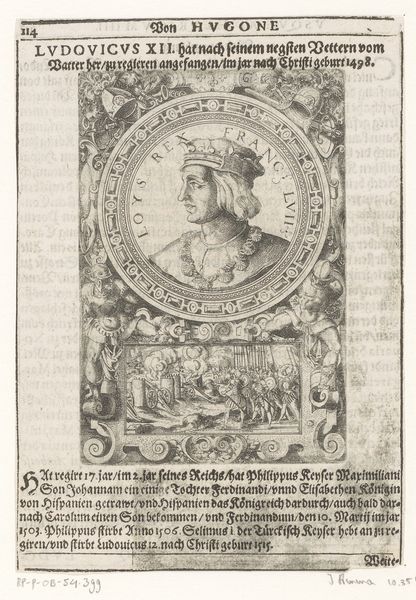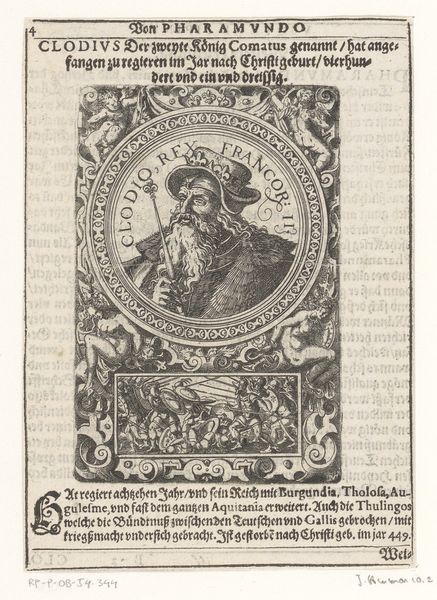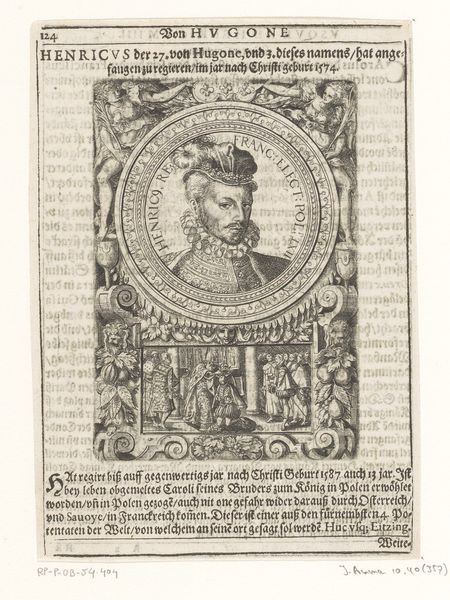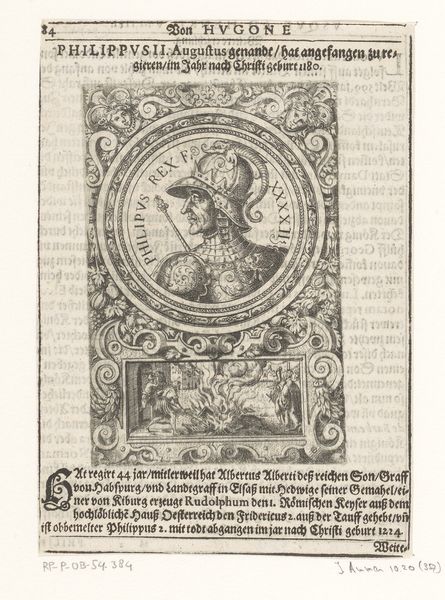
print, engraving
#
portrait
#
medieval
# print
#
figuration
#
line
#
northern-renaissance
#
engraving
Dimensions: height 117 mm, width 79 mm
Copyright: Rijks Museum: Open Domain
Editor: This is a portrait of Philip V, King of France, crafted in 1598 by Jost Amman. It's a print, an engraving to be exact, currently housed at the Rijksmuseum. The first thing that strikes me is how meticulously detailed it is. It feels both regal and…somehow small. What do you see when you look at it? Curator: "Small" is an interesting take! For me, it evokes the power of symbolism within constraints. Consider that the small scale necessitates an even greater density of information. Jost Amman packs in details of lineage, status, and perhaps a little…shall we say “spin,” considering that accompanying text questioning Phillip’s heir. It seems he reigns through the "Grace of the Salic Law." Do you know anything about that particular "grace"? Editor: Not really, I confess! Curator: It means that a woman could not be queen regnant. It's also intriguing how the Northern Renaissance print aesthetic emphasizes line and detail, versus broad swaths of tone. What feeling do you get from Amman's heavy reliance on the engraving lines, do they seem to contribute any meaning? Editor: I see what you mean about the lines, they make it very... deliberate. It's like every mark had to count. It’s as though those firm lines try to solidify and maybe even 'justify' Philip’s rule. Before this chat, I saw a pretty, old portrait. Now, I'm reading into it! Curator: And isn't that the most thrilling part? How context and close looking transforms mere aesthetics into loaded rhetoric. It makes me wonder what other hidden arguments lay dormant in plain sight around us, hmm?
Comments
No comments
Be the first to comment and join the conversation on the ultimate creative platform.
